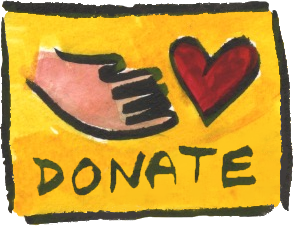Freeing Your Breath and Spine (16m or 37m)
Part of our Getting Oriented collection. Also appears in Breathing with Vitality and Six Lessons for Anxiety.
Explore paradoxical ("seesaw") breathing in various positions to unlock your breathing apparatus. The back-lying first 16 minutes can be studied alone. Discover more pleasurable, adaptable breathing using 360 degree experiments with the chest and abdomen, and find a more supple, supportive spine along the way!
Got a question for Nick, or a thought about this lesson?
Use the comments section below! Public comments build our community and help search engines find us.





I like this lesson a lot. Just a question. When doing the movement of rolling on the head when u are on your forearms, when I finished i felt like I was going to get a nosebleed. I didnt get one but just had the sensation. Was I doing something wrong? Thanks
As you explore and follow the “only do what’s comfortable” instructions, that guideline goes for any kind of experience/sensation during the lessons. Assuming you were moving slowly, smoothly, and comfortably you were doing just fine by the movements – but, if you have an unpleasant sensation or even an uncertain one, it’s best to do less, go slower, or take a break. Later, if you come back into the movement or repeat the lesson, stay curious about those sensations.
Really enjoyed this lesson, Nick. As a long time meditator, it’s fascinating to feel grounded and full in a new and different way. Also, loved your question on sensing into which breath is more pleasurable. Thank you for the reminder of pleasure, and for your precise instruction!
Thanks
Again I want to remark, at first I only did the first 16 minutes 2 or three times because I have been discovering how my breathing is mostly belly with my ribs very retricted in movement. this is am\n incredibly valuable learning for me. I’m learning to “point my breath” to teach my body how to move more “fluidly” ?!
Second time doing the whole lesson,usually only did first ½. There was a definite shift in how much more I breathe with my whole body! I notice my shoulders even moving, not only my belly.thanks I believe my chest rib constrictions will lossen. Thanks, Nick
Thanks for sharing your process with me and other users! Great to hear that you’re discovering new options. I love that you took me up on just doing the first 16 minutes the first few times!
I did this one and the next, the simple floor clock yesterday morning. Afterwards, I felt really cold (even after putting on sweats) and nauseous. After about an hour, I started to feel normal again. Did I try too hard??!
It may be that the two lessons one after another were too much, or as you suggest you overdid something. Hard to say from a distance. Did you feel any straining or unpleasantness during either lesson? This is an unusual response, so please take it extra easy for your next lesson and don’t hesitate to ask more questions.
Today was my first experience of paradoxical breathing in an extended lesson. While I was introduced to aspects of this during FI sessions several months ago, it was enlightening to move through the process more slowly and with these variations. I plan to repeat this lesson several times and then do the other two you mention. Thank you Nick!
Another magic lesson! as you say Nick everything is related! I’ve been struggling with on and off stiff neck and shoulders for the past month, so when I lay down to do this lesson, I was only expecting to “relax” and breathe deeper. Well that did happen in a very interesting way in so far as my belly expanded much lower and deeper and my chest was willing to swell> Wonderfull feeling, but the best feeling of all was doing the bit at the end on our hands and knees, and discovering that my neck was free to join in! and is still free to write this email (-;
Thank you so much Nick for your fantastically clear and slow-paced instructions!
Hi Nick! It is the first time I leave a comment but I have done some lessons already with you and I LOVE THEM!. I have been going through some mild little niggles around my body so I have decided to embark on a nervous system healing process and Feldenkrais will be one of my main activities to do so, so thank you so much for offering this space.
Question: I usually close my eyes when on the floor. Do you recommend trying to keep them open? I am aware of how impactful eyes can be so I wanted to know your opinion about this.
Thank you so much!
Welcome! Indeed, our eyes have an enormous role in organizing our movement. Generally leaving your eyes closed is a good default choice in lessons that don’t mention them, as long as that’s relaxing and pleasant for you. In some lessons you’ll be specifically invited to open your eyes and gaze at places in the room, or moving parts of yourself. Some lessons will even play in great detail with the integration and differentiation of yours eyes. You might type “eyes” into our lesson search to check out what’s available
Hi Nick,
I thoroughly enjoyed the lesson. I am also a Feldenkrais ATM Teacher and was unable to find Mark Reese’s version in my notes and discovered your site. Your version was had some different qualities and I appreciate your friendly delivery as well. My whole body and breath feel very relaxed. Thank you!
Just love this movement with gentle enquiry to free the mind, body as a long time yoga instructor who is experiencing challenges in aging especially spinal. Unexpectedly had positive influences on my spiritual well being too. Amazing 😉 ! Thankyou for encouraging my sense of humour too with your kind directions.